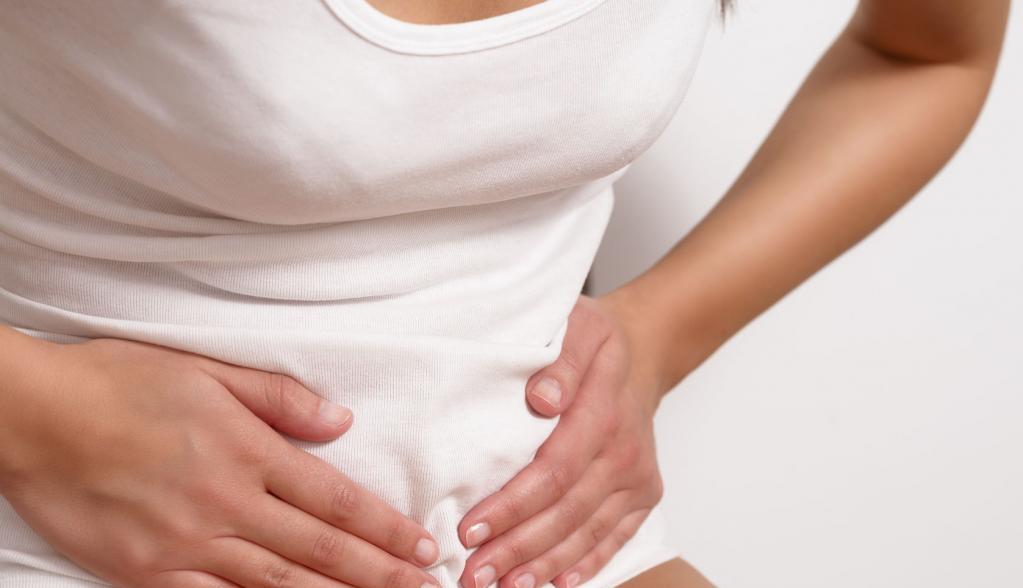The sexual cycle is also called menstrual. These are periodically occurring changes in the body of a woman of reproductive age, which are aimed at the probable possibility of conception. The beginning of the menstrual cycle in medicine is considered to be the first day of menstruation. In total, it includes three phases, which we will discuss in this article. It is proliferative, menstrual, and secretory. If in animals, females are capable of sexual behavior at any time, then in humans after about five hundred cycles, menopause occurs. This occurs between the ages of 46 and 54. In this condition, the ovaries become insensitive to luteotropin and follitropin.
Duration

The duration of the sexual cycle in women can be different. The physiological processes occurring in her body are crucial to this. In this case, there are approximate dates in which it should fit. If this does not happen, then there is reason to suspect various violations.
The duration of a woman's sexual cycle is 28 days. Depending on various factors, it can vary, becoming a week longer or shorter.
First menstruation

To understand the concept of the sexual cycle, you should delve into specialized terminology related to this condition. This article will discuss the basic terms.
The central event in the process of sexual development of every woman is menarche. This is the first sexual cycle in her life. It indicates that the body is now ready for reproduction. As a rule, in women, menarche occurs at the age of twelve to fourteen. The norm is considered the age of nine to fifteen years.
When menstruation occurs at the age of nine, they speak of an early menarche, and at the age of 15 - about primary amenorrhea. The time at which the first menstrual bleeding comes depends on many factors. This is nutrition, heredity, the general health of the girl.
Possible violations
Violations of the sexual cycle can be caused by a large number of various factors. These are pregnancy, hormonal disruptions in adolescence, and other natural causes. The menstrual cycle may go astray due to internal and external stresses.
It is customary to talk about the delay in menstruation if cyclic bleeding is absent for 35 days. It should be noted that small delays in menstruation are considered normal. However, only if their duration does not exceed ten days.
One of the most common causes of delayed menstruation is pregnancy. In this case, a test should be purchased for confirmation. If the result is negative, you need to consult a gynecologist. He will understand the reasons and, if necessary, prescribe the appropriate treatment.
The causes of dysregulation of the sexual cycle can be a great many:
- neurological and mental illness;
- mental shocks;
- obesity;
- avitaminosis;
- infectious diseases;
- liver problems
- diseases of the hematopoietic system, blood vessels or heart;
- consequences of gynecological operations;
- violation of puberty;
- urinary tract injury;
- genetic diseases;
- hormonal changes that occur in the menopause.
It is worth noting that in adolescents, delayed menstruation is a common occurrence. In the first couple of years after the onset of menstruation, girls rarely have a constant cycle. In this case, do not worry, this is a common occurrence. It is due to the fact that at this age the hormonal background is still unstable, therefore mood ups and downs are likely, which leads to a significant increase or decrease in the level of hormones in the blood. When hormones cease to rage, the cycle immediately stabilizes. If he does not become regular two years after the onset of menstruation, consult a gynecologist for help.
Climax
Discontinuation of regular periods of the sexual cycle occurs during menopause. This is characterized by the extinction of reproductive function. Irregular menstruation or their complete cessation is called menopause.
When this time comes, it mainly depends on heredity. Also, medical interventions, in particular, gynecological operations, some diseases, can have an effect. All these problems can lead to the onset of an early menopause.
Phases

The processes that occur during menstruation constitute the phases of the genital cycle, they are also called stages.
They correspond to changes that occur in the ovaries and endometrium, that is, the internal mucous membrane of the uterus lining its cavity.
Follicular phase

The first stage of the sexual cycle is called menstrual or follicular. At this stage, the woman begins to bleed from the uterus. This happens due to rejection of the endometrial layer, which is abundantly supplied with blood vessels.
Rejection begins at the end of the ovarian cycle. It occurs necessarily only if the egg has not been fertilized. The very first day of menstruation is considered to be the beginning of the first stage of the reproductive cycle or the follicular phase of the ovary. The duration of this period may be different, for each woman it is individual. During this time, the dominant follicle must finally mature. On average, it is two weeks, but the time period from seven to 22 days is considered the norm.
Menstrual cycle

The follicular phase and the ovarian cycle accompanying it begin with the release of gonadoliberin by the hypothalamus. It actively stimulates the pituitary gland to secrete a small amount of luteinizing and follicle-stimulating hormones. These are, respectively, lutropin and follitropin.
Due to the decreased level of estradiol secretion, the secretion of lutropin and follitropin is suppressed. As a result, their level of education remains low.
Under the influence of follitropin, several follicles begin to develop in the ovaries at once. Of these, a dominant follicle is allocated, which has a maximum number of folliculotropin receptors. In addition, he synthesizes estradiol most intensively. The rest are subjected to atresia, that is, the reverse development of follicles in the ovary.
Over time, the level of estradiol in the body begins to increase. At its low concentration, the secretion of gonadotropins is suppressed, and at high, on the contrary, it is stimulated. As a result, these processes lead to a significant release of gonadoliberin by the hypothalamus.
This effect is especially pronounced for lutropin, since a high concentration of estradiol increases the sensitivity of adenohypophysis cells. In addition, follicles respond much more intensively to lutropin due to the presence of a larger number of receptors for this hormone.
The result of this is regulation by the principle of positive feedback. The follicle continues to increase in size exactly until a sharp release of lutropin begins. This means the completion of the follicular phase.
Ovulatory phase
A new phase is called ovulatory or proliferative. Around the end of the first week of the cycle, a dominant follicle is secreted. It continues to grow steadily, and also increases the amount of estradiol. At this time, the remaining follicles undergo reverse development.
The follicle, which finally ripens and is ready for ovulation, is called the scientific graaf bubble. It is worth noting that the ovulatory phase lasts only about three days. During this time, the main release of luteinizing hormone occurs.
Hormone release

Within a half to two days, several waves of the release of this hormone happen in a row at once, its concentration in the plasma composition at this time increases significantly. The release of luteinizing hormone is the final stage of follicle development. In addition, it stimulates the production of proteolytic enzymes and prostaglandins, which are required to rupture the follicle wall and release the egg. This is directly the process of ovulation.
In parallel, the level of estradiol in the body begins to fall. A feature of the genital cycle is that in some cases this may be accompanied by ovulatory syndrome. It is characterized by painful and uncomfortable sensations in the abdomen, iliac regions.
As a rule, ovulation occurs within 24 hours after the maximum wave of release of luteinizing hormone. The norm is a period from 16 hours to two days. This is an important part of the sexual reproduction cycle.
During ovulation in the body of a woman, 5 to 10 ml of follicular fluid is released, which contains the egg needed for conception.
Secretory phase
This phase of menstruation is also called luteal. This is the period of time between ovulation and the beginning of another menstrual bleeding. It is also known as the corpus luteum phase. Unlike the previous follicular phase, the duration of this stage is considered more constant. It is from 13 to 14 days, normally it can be more or less for two days.
When a graaf bubble ruptures, its walls immediately collapse, and luteal pigment and lipids penetrate into the cells. Due to this, it acquires a characteristic yellow color. After transformation, the follicle is already called the corpus luteum.
In total, the duration of the luteal phase depends on the period of functioning of the corpus luteum. This is usually ten to twelve days. At this time, it secretes estradiol, progesterone and androgens. In the presence of elevated levels of progesterone and estrogen, the outer layers of the endometrium change. Its glands mature, begin to secrete and proliferate. This is a clear sign that the uterus is preparing to receive a fertilized egg.
Estrogen and progesterone reach their peak around the middle of the luteal phase, while the amount of corresponding hormones decreases in parallel.
If pregnancy does not occur ...

When the egg remains unfertilized, the corpus luteum ceases to function after some time. The level of progesterone and estrogen is reduced. Because of this, there is swelling and necrotic changes in the endometrium.
By lowering the level of progesterone, the synthesis of prostaglandins is also enhanced. When the egg is not fertilized, after some time luteolysis begins in the corpus luteum, that is, structural damage, since it is no longer able to synthesize estradiol and progesterone.
Due to this process, the secretion of lutropin and follitropin is no longer suppressed. The secretion of these hormones increases, this leads to the stimulation of a new follicle. With a decrease in progesterone and estrogen levels, the synthesis of follicle-stimulating and luteinizing hormones resumes. So begins a new cycle in the body of a woman.
Stages of arousal
An important place in the reproductive system is occupied by the stages of excitation of the sexual cycle. In total, there are three of them. This is arousal, inhibition and balancing. During this period, changes occur, some of which are easy to notice, while others are elusive even for modern biological devices.
At the stage of sexual arousal in the female body, follicles mature and ovulate. During this period, he is ready for conception.
During inhibition, signs of sexual arousal appear much weaker. Then comes the balancing stage, which continues again until the new stage of excitation. During this period, the woman is in the most balanced state. The processes that occur in the body have an effect on this.